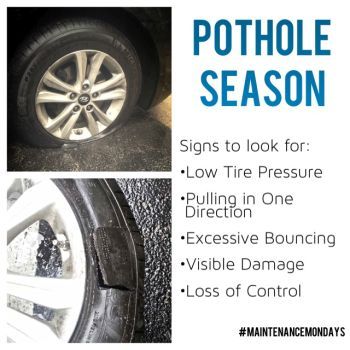How well does your teen drive? GM's new Teen Driving System, My Link, allows parents to know how well or how poorly their teenagers are driving. Would you like a report card on how safely your teen is driving? Watch automotive expert Lauren Fix, The Car Coach on The Willis Report.
Unprecedented Look into the Causes of Teen Crashes by the AAA Foundation for Traffic Safety
WASHINGTON, D.C. (March 25, 2015) – The most comprehensive research ever conducted into crash videos of teen drivers has found significant evidence that distracted driving is likely much more serious a problem than previously known, according to the AAA Foundation for Traffic Safety. The unprecedented video analysis finds that distraction was a factor in nearly 6 out of 10 moderate-to-severe teen crashes, which is four times as many as official estimates based on police reports.
Researchers analyzed the six seconds leading up to a crash in nearly 1,700 videos of teen drivers taken from in-vehicle event recorders. The results showed that distraction was a factor in 58 percent of all crashes studied, including 89 percent of road-departure crashes and 76 percent of rear-end crashes. NHTSA previously has estimated that distraction is a factor in only 14 percent of all teen driver crashes.
 Potholes have returned, and hitting one with your car can do a real number on tires, wheels, steering and suspension, and alignment. To help determine if hitting a pothole has damaged your vehicle, the Car Care Council reminds you to watch for these warning signs:
Potholes have returned, and hitting one with your car can do a real number on tires, wheels, steering and suspension, and alignment. To help determine if hitting a pothole has damaged your vehicle, the Car Care Council reminds you to watch for these warning signs:
- Loss of control, swaying when making routine turns, bottoming out on city streets or bouncing excessively on rough roads are indicators that the steering and suspension may have been damaged. The steering and suspension are key safety-related systems. Together, they largely determine your car’s ride and handling. Key components are shocks and/or struts, the steering knuckle, ball joints, the steering rack/box, bearings, seals and hub units and tie rod ends.
- Pulling in one direction, instead of maintaining a straight path, and uneven tire wear, are symptoms of an alignment problem. Proper wheel alignment is important for the lifespan of tires and helps ensure safe handling.
- Low tire pressure, bulges or blisters on the sidewalls, or dents in the wheel rim will be visible and should be checked out as soon as possible, as tires are the critical connection between your car and the road.
Science fiction meets reality! Automotive expert Lauren Fix, The Car Coach discusses a new prototype of the flying car. What are the chances that flying cars take to the road (and the skies) in 2017?
National Car Care Month in April is the time of year to give your car some extra attention. Basic maintenance can go a long way toward improving the safety and dependability of your vehicle, plus it helps avoid costly repairs down the road.
“Neglected vehicle care almost always means much higher costs down the line in the form of more extensive repairs or lost resale value,” said Rich White, executive director, Car Care Council. “Chances are if you own a car, it needs some work. National Car Care Month in April is the perfect time to focus on your vehicle’s maintenance needs.”
After another brutal winter, many Americans will hit the road to find better weather. If you are planning a road trip to a warm vacation destination, the Car Care Council recommends a pre-trip vehicle check to help you avoid the inconvenience and potential safety hazards of breaking down miles from home.
“Spring break time is finally here. While jumping in the car and heading to a warmer climate may sound like a great idea, don’t forget to make sure your car is road ready before you go,” said Rich White, executive director, Car Care Council. “A pre-trip vehicle check will give you peace of mind because you can take steps to have any needed repairs performed before you go.”
The very cold weather we’ve experienced this season, mixed with a few warm days, has really taken a toll on our roadways. Some of the potholes on the road are like craters on the moon, while others are getting worse and larger every day traffic drives right through them.
Drivers Face Longest Streak of Rising Gas Prices in Two Years

(WASHINGTON, March 02, 2015)
U.S. average gas prices have increased 35 days in a row for a total of 39 cents per gallon, which is the longest consecutive streak of rising prices since February 2013. Gas prices are up primarily due to a combination of rising crude oil costs, refinery maintenance and unplanned production problems.
Today’s national average price of gas is $2.43 per gallon. The national average increased about 13 cents per gallon during the past week, which is the largest one-week jump since July 2013. Despite recent increases, the national average remains about $1.03 per gallon less than a year ago.
If your wallet feels a little heavier these days, it probably is because you have been spending a lot less at the pump. According to the Car Care Council, if you spend some of that gas savings on auto care, you can save even more in the long run.
“Gas prices are lower than they have been for nearly six years and that means big savings for motorists,” said Rich White, executive director, Car Care Council. “Add to that a proactive auto care plan and you will not only save more now, but as gas prices start to rise again, you’ll save later. All because you invested in your vehicle to make sure it runs efficiently.”
Your coolant needs to be changed on a regular basis. Don't let your radiator get clogged - you will end up with an engine that can not cool itself causing pricey repairs to your engine and your transmission.

















